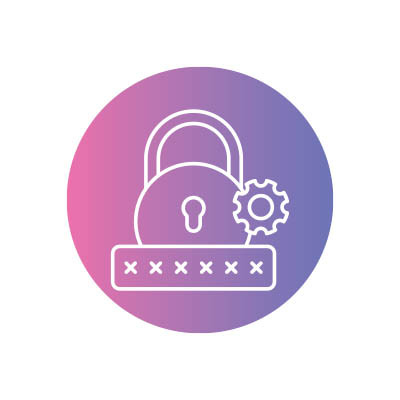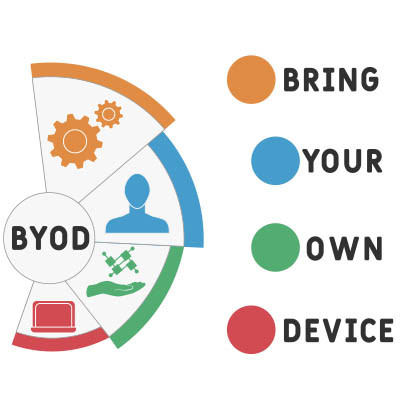Ferrum Technology Services Blog
Is your business technology a tangled web of frustrations? You're certainly not navigating this digital dilemma alone. We frequently hear from organizations grappling with sluggish networks, outdated software that feels like a relic from the dial-up era, and the ever-present anxiety of safeguarding crucial business data.
This technological turbulence doesn't have to be your reality. Today, we're charting a course to help you reconstruct your IT infrastructure from the ground up, paving the way for smoother operations and greater peace of mind.
Windows is, for the most part, the default operating system you can expect to see in a business setting. That said, some owners have never used a Windows computer before, instead using a simple Chromebook or a Mac. Still, it’s good to know how Windows works, especially since it seems there’s a significant gap in knowledge.
Today, we’re exploring how the different drives on Windows PCs work so you can make better use of your workplace tools.
Cybersecurity isn’t the most fun thing to talk about, but it’s still important. This is especially for your employees who are on the front lines, the most likely folks to encounter threats during their day-to-day tasks. Today, we want to cover how your business can build better cybersecurity training practices that can keep your business secure for the long haul.
There are a lot of sketchy parts of the Internet, but the sketchiest of all might be the Dark Web. Located on a part of the Internet that search engines don’t index and inaccessible to most web browsers, the Dark Web is a place where cybercriminals thrive. It’s a place where stolen data is put up for sale, and if you’re not careful, your business could be next.
More often than not, you have an employee on staff who rolls their eyes whenever you have to send out another cybersecurity email or reminder. This “who cares” mindset is dangerous and can infect your business in a profoundly disturbing way. Today, we want to get into why this “who cares” mindset is so dangerous and what’s really at stake when you have an employee who can’t get on board with your security policies.
While the goal of cybersecurity is always to prevent threats from taking advantage of your infrastructure, this is becoming more and more challenging as time wears on and threats evolve to changes in cybersecurity discourse. A recent podcast episode from Illumio, “Trust & Resilience: The New Frontlines of Cybersecurity,” explores how trust has become a vulnerability that attackers exploit in new and creative ways. How can cybersecurity as an industry pivot in response to this trend?
While technology is an important part of your business, it shouldn’t be distracting you from carrying out your company’s mission. Indeed, it can be difficult to stay up-to-date on the latest practices and solutions, and it can feel impossible to keep up. While you could adopt the “good enough” policy that many businesses settle for, we think you should take a different approach—one that will make you impossible to compete with if carried out appropriately.
Are you making security a priority for your business? While it’s one thing to protect your network, it’s another to protect your business’ physical location. If you don’t implement processes and solutions to secure your office, you might be in a position where someone could steal equipment, data, or worse. Here are some ways to prioritize physical security for your business, too.
The Internet of Things (IoT) is becoming one of the most exciting tech trends out there, but it is difficult to know where to start. It means using Internet-connected smart devices to help businesses run better. Some companies think IoT is too expensive or too complicated, but when done right, it can actually save a lot of money and make things work smoother. Let’s break down how businesses are using IoT and why it’s totally worth it.
Running a small business is already a juggling act. Now toss managing IT into the mix and watch the balls start to bounce in every direction. IT for small businesses isn’t just plugging in a few computers and setting up Wi-Fi. It’s an ever-growing web of systems, tools, security measures, and the occasional mysterious error message that nobody understands. Let’s take a look at some of the things that every small business owner needs to look at as far as their technology is concerned.
Modern cybersecurity requires you to lock down numerous access points to protect your business, using various tools to accomplish sufficient security precautions. The password manager is one such tool that can genuinely save your metaphorical bacon.
Let’s explore how this essential tool works and why it is valuable for your business to implement.
Imagine for a moment a world where you don’t have to distribute devices to your employees and can instead rely on your team to provide them. With Bring Your Own Device, or BYOD, businesses can leverage employee-owned devices to their advantage for work-related purposes. There is a catch, though: you have to make sure they’re used safely.
Malware can be scary to talk about, but it’s a topic that you should be intimately familiar with, or at least aware of, if you want to keep your business running. These days, you can’t do much of anything online without potentially exposing yourself and your organization to a security risk. Today, we want to explore the different types of malware you might encounter and why it’s so important to take action today to limit their influence on your business.
Google has implemented Gemini, its latest AI model, into its free software strategy. Previously, it was only available to those on the Advanced plan, a $20/month service. The model can reference a user’s Search queries and other applications to personalize the user’s results, but is this a good thing, or even something you want in the first place?
For businesses, staying compliant with data regulations isn’t just about avoiding hefty fines; it’s about building trust with customers, protecting sensitive information, and keeping operations running smoothly. Ignoring compliance isn’t an option. A single slip-up can lead to legal trouble, financial losses, and serious damage to your company’s reputation.
Your business runs on data. You keep customer information, invoices, project files, inventory and much more. If you were to lose it, you face a myriad of problems from hits to your reputation to major downtime. Today is World Backup Day, so we thought it would be good to highlight just how important having a feature-rich and reliable backup strategy is.
How much does your business currently rely on the cloud? There are loads of ways to use it, but the best way is to find what works for your business, then double down on it according to your company’s specific needs. We’re looking at how the type of cloud can impact the way your business uses this flexible asset.
Google Chrome is everywhere. It’s one of the most popular web browsers for a reason, but most people don’t take full advantage of everything it can do. That means you’re probably missing out on some cool features that could save you time and make your life a whole lot easier.
Today, we’re diving into some Chrome tips you might not know about, plus a few hidden gems that can help you get even more out of your browsing experience, whether you’re using it for work or just everyday tasks.




















